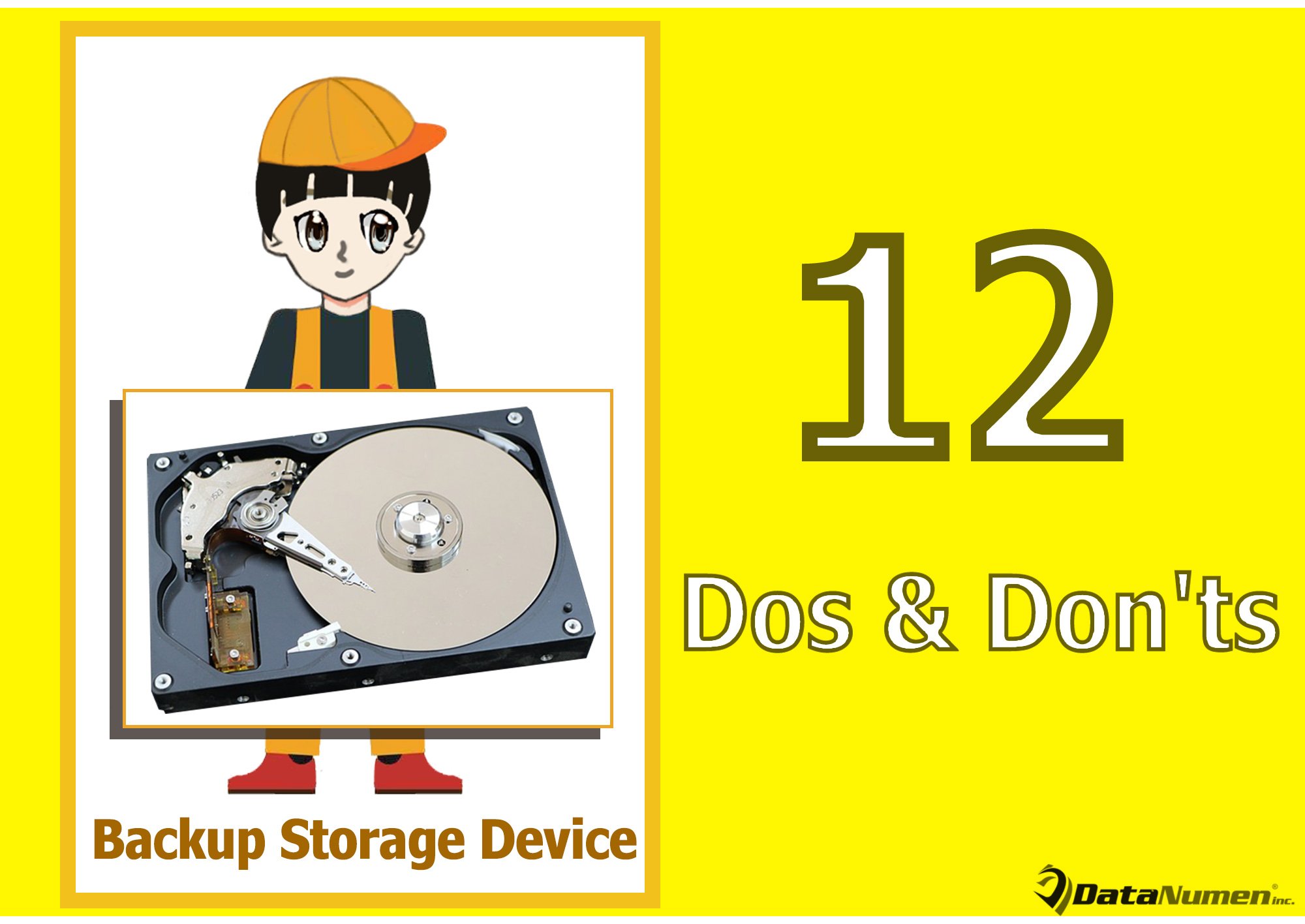As we all know, it is vitally crucial to maintain the backup storage device. Once the device gets damaged, all of your backup data will be corrupt surely. So, this article will share 12 dos and don’ts with your backup storage device.
Have you ever encountered backup storage device corruption? It is considerably scary in that all of your backup data would be compromised, like PST corruption. Therefore, users should take good care of your backup device, such as keeping it away from various potential threats, including viruses, water and fire, etc. Here, I have listed out some simple do’s and don’ts with your backup storage device.

Dos
1. Scan the Device via Antivirus Tool Regularly
It is known that viruses become increasingly sophisticated and rampant. In this scenario, so as to protect your device from virus infection or malware attack, it is advisable to regularly scan the device with updated antivirus software.
2. Store the Device in a Secure Place
Moreover, usually, backup device can suffer physical damages. Hence, you have to always store it in a secure place. For instance, you shouldn’t put it on a too high floor, avoiding sudden failing and so on.
3. Always Safe Remove the Device
In addition, to back up your computer data, you must connect the backup device to the PC. When you complete backup and intend to eject the device, you need to use “Safe to Remove Hardware” option. Otherwise, if you unplug it directly, it may be damaged.
4. Monitor Backup Device’s Health
What’s more, backup storage device can suffer assorted issues without warning you. Therefore, you need to build a good habit of monitoring the device’s health. You can make use of Windows CHKDSK tool or S.M. A. R.T software to accomplish this task.
5. Handle the Device with Care
Of course, in your daily usage of the backup device, you ought to pay attention to your operations. You should handle the device with care, such as never throwing it out anywhere, warping it in a padded box when you need to move it from one place to another.
6. Encrypt the Device Data
Furthermore, if you want to keep your backup data inaccessible from others, you can encrypt the device data. There are a variety of encryption utilities available in the market. You can select a reliable tool from them.
7. Keep the Device Clean
Aside from all mentioned above, you should keep your device clean as well. For instance, in terms of backup hard drive, if there is too much dust on the drive, it’ll be prone to damage and can get overheated quite easily.
Don’ts
1. Don’t Back up Virus-infected Data to the Device
When it comes to things you shouldn’t do with the backup storage device, first of all, it is worthy of mentioning that you should never back up virus-infected data. Otherwise, the previous backup data will get virus-attacked as well.
2. Don’t Connect the Device to Virus-infected PCs
Like the above one, you cannot connect the backup device to any virus-infected machines, such as computers. Or else, the device will contact virus as well.
3. Don’t Leave the Device Aside for a Long Period
It is highly advisable to keep on using the backup device on a regular basis. If not, the device may not be able to function as you use after a long period. In a nutshell, don’t leave it aside for a long time.
4. Don’t Frequently Insert and Eject the Device
If you are using a USB flash memory device for backup, such as pen drives or SD cards, you should prevent inserting and ejecting it on computers too frequently. It is because such actions will make device unrecognizable by system.
5. Don’t Keep the Device Connected All Time
Last but not least, it is not recommended to keep the backup device connected to computer 24/7. For the sakes of convenience, many users make this mistake. But, it can cause many serious problems, including accelerating the degradation of the device.
Author Introduction:
Shirley Zhang is a data recovery expert in DataNumen, Inc., which is the world leader in data recovery technologies, including mdf repair and outlook repair software products. For more information visit www.datanumen.com